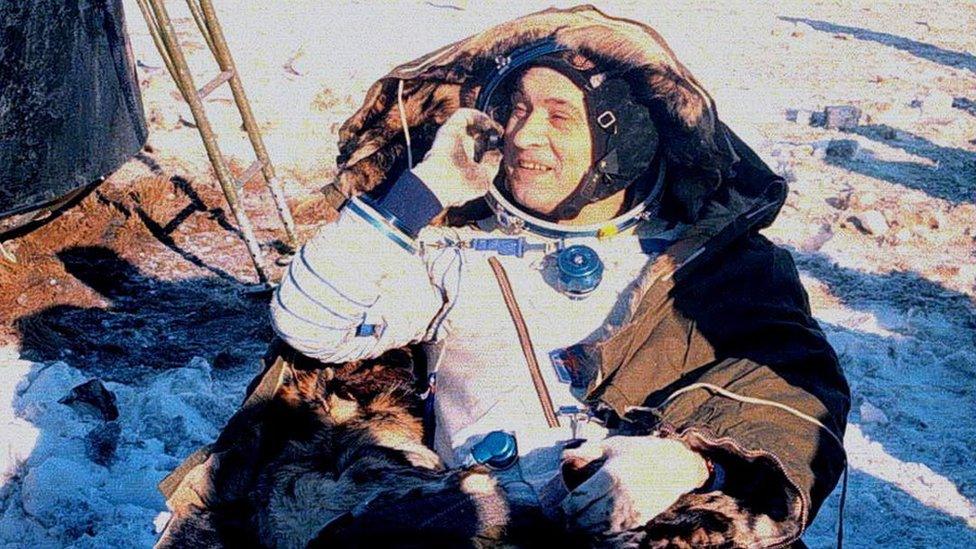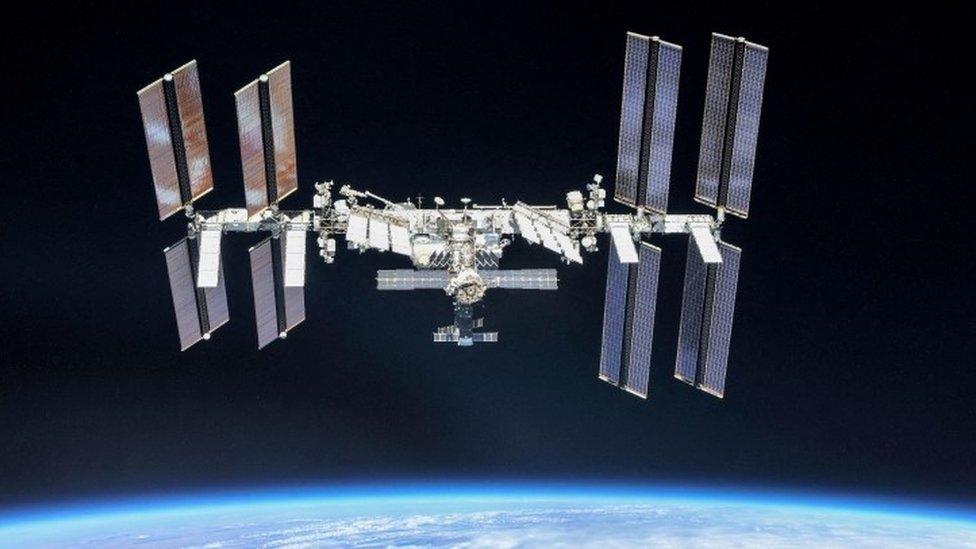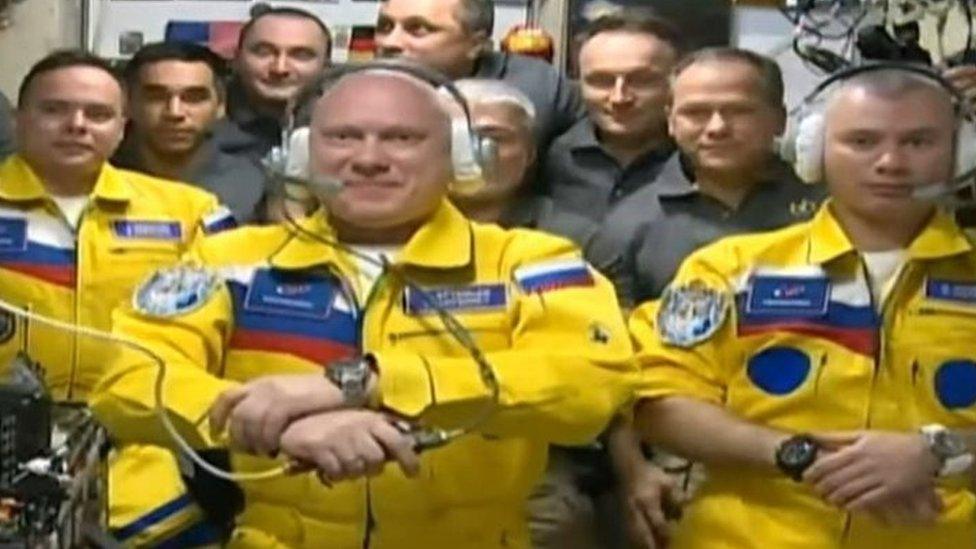Valery Polyakov: Record-breaking Russian cosmonaut dies aged 80
- Published

Valery Polyakov said his 14-month expedition was the equivalent of travelling to Mars and back
A Russian cosmonaut who holds the record for the longest-ever trip to space has died aged 80.
Valery Polyakov spent 437 full days orbiting the Earth between 1994 and 1995 on the Mir space station.
He worked on experiments to see whether people could maintain their mental health if they were to make a long journey to Mars.
Tests found that there was no impairment of his cognitive function as a result of his 14-month expedition.
Polyakov's death was announced by the Russian space agency, which used his honorary titles, including hero of the Soviet Union and pilot-cosmonaut of the USSR.
The cause of Polyakov's death was not disclosed.
The agency, Roscosmos, added in a Telegram post that Polyakov's research had helped to prove that the human body could handle flights well beyond Earth's orbit, into deep space.
Polyakov was born in 1942 in Tula, a city to the south of the capital Moscow, qualifying first as a physician and then as a cosmonaut.
He was launched on his first mission in August 1988, spending eight months in orbit.
It was his flight six years later that earned Polyakov his record for the longest trip to space, which still stands to this day.
Polyakov lived and worked on the Mir space station from 8 January 1994 to 22 March 1995, reportedly orbiting the Earth more than 7,000 times.
He later said that the duration of the trip was the equivalent of journeying to Mars and back.
BBC FUTURE: Forty years of living in outer space
On Polyakov's return, he is said to have declined an offer to be carried out of his capsule, which is standard practice as astronauts reacclimatise to gravity on Earth.
Instead, he climbed out with the assistance of others.
The Mir space station was sent into orbit in 1986, first under the control of the Soviet Union and later Russia.
Deployed during the Cold War, the 135-tonne (135,000kg) satellite was used with the cooperation of the Soviet Union and US, despite longstanding political tensions.
It proved instrumental in developing an understanding of how humans might be able to live and work in space, before being retired in 2001.
Related topics
- Published26 July 2022

- Published19 March 2022

- Published15 March 2022
